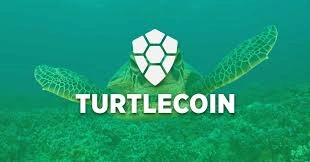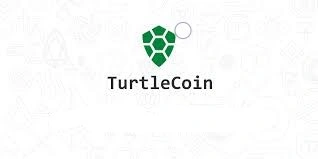TurtleCoin: A Privacy-Focused, Fast, and Decentralized Crypto
Table of Contents

TurtleCoin is a Mineable Token. Are you curious about expanding your crypto portfolio with other mineable tokens or alternative coins? At Niftyfinances, you’ll find in-depth information, guides, and the latest updates on various promising crypto projects. Whether you’re a miner or an enthusiast looking for unique opportunities, Niftyfinances is your go-to platform to discover what’s next in decentralized finance!
What if a cryptocurrency combined privacy, speed, and decentralization—without the complexity? Meet TurtleCoin (TRTL)! Launched in 2017, TRTL aimed to provide fast transactions, secure mining, and a strong community-driven ecosystem. Despite its playful name, TurtleCoin was a serious player in the privacy coin sector. But with its official website offline and development winding down, what does the future hold for TRTL? Let’s explore everything you need to know.

What is TurtleCoin (TRTL)?
TurtleCoin (TRTL) is a privacy-focused cryptocurrency launched in December 2017 by two developers. Designed as a fun and accessible project, it emphasizes ease of use and community involvement. They aimed to create a fun, fast, and easy-to-use digital currency that emphasizes community involvement and technological advancement. TRTL is a fork of Bytecoin, utilizing the CryptoNote protocol to provide inherent privacy features, such as ring signatures, ensuring that all transactions are private by default.
- Fast Transactions: TRTL offers a 30-second block time, enabling quicker transaction confirmations compared to many other cryptocurrencies.
- Privacy: Built on the CryptoNote protocol, TRTL incorporates privacy features similar to those of Monero, ensuring user anonymity in transactions.
- Decentralization: The project is entirely community-driven, with an open-source codebase that encourages contributions from developers worldwide.
- User-Friendly and Community-Driven: The project is open-source and boasts an active, welcoming community. Its development team regularly updates the codebase, and the coin is designed to be easily mined using standard CPU hardware.
- Large Supply with Two Decimal Places: TRTL has a maximum supply of 1 trillion coins but is divisible only up to two decimal places (0.00 TRTL), similar to traditional fiat currencies.
ASIC-Resistant Mining and Accessibility for Everyday Users
One of TurtleCoin’s biggest selling points was its ASIC-resistant mining algorithm (Cryptonight_lite_v7). Unlike Bitcoin and other major cryptocurrencies dominated by expensive ASIC mining rigs, TRTL allowed anyone with a regular computer (CPU or GPU) to mine TRTL coins. This made it more inclusive and prevented mining centralization.
- Easy to Start Mining: Users could mine TRTL using a simple wallet and mining software.
- Low Hardware Requirements: No need for high-end GPUs or ASIC miners—any PC could participate.
- Community Mining Pools: Miners could join community-driven pools to share rewards fairly.
TurtleCoin was a great entry point for those new to cryptocurrency mining, offering a low-cost, beginner-friendly experience while maintaining a strong focus on security and decentralization.
Impact on Existing TurtleCoin Holders and Miners
For existing TRTL holders, the network shutdown means that transactions are no longer possible, and the tokens are effectively inaccessible. Miners who were actively participating in the network are also affected, as their mining efforts are no longer contributing to the blockchain.

How TurtleCoin Works
TurtleCoin (TRTL) is a privacy-focused cryptocurrency that utilizes the CryptoNote protocol. It provides secure, fast, and private transactions using an accessible and decentralized system.
Blockchain and CryptoNote Protocol
- Blockchain Structure: TRTL operates on a blockchain, a decentralized ledger that records all transactions. Each transaction is grouped into a “block,” and new blocks are added to the chain through a mining process.
- CryptoNote Protocol: TRTL uses CryptoNote technology, which provides enhanced privacy and security features. This protocol allows for ring signatures and stealth addresses, ensuring that the sender, receiver, and transaction amount are hidden from external parties.
Ring Signatures for Privacy
- Ring Signatures: These allow TRTL transactions to be anonymous. When a user sends TRTL, their transaction is combined with several other transactions, creating a “ring” of possible senders. This makes it impossible to trace the origin of the transaction to any specific user.
- RingCT (Ring Confidential Transactions): This technology not only hides the sender but also obfuscates the transaction amount, ensuring complete privacy for users.
Stealth Addresses
- Stealth Addresses: These are one-time addresses created for each transaction. They allow the recipient to receive funds without revealing their main wallet address. This prevents anyone from associating transactions with a specific wallet, further enhancing privacy.
Mining and Consensus Mechanism
- Mining Algorithm: TurtleCoin uses the CryptoNight algorithm, which is ASIC-resistant. This ensures that regular users can mine TRTL using CPUs or GPUs without the need for expensive mining hardware (ASICs).
- Proof-of-Work (PoW): TurtleCoin’s blockchain operates on a Proof-of-Work (PoW) consensus mechanism. This means miners compete to solve complex mathematical problems, and the first to solve it adds a new block to the blockchain. In return, they are rewarded with newly minted TRTL coins.
- Fast Block Times: TRTL has a 30-second block time, which makes it much faster than other privacy-focused cryptocurrencies like Monero (which has a 2-minute block time). This results in quicker transaction confirmations.
Wallets and Storage
- Wallet Options: To interact with TRTL, users need a wallet to store their TRTL coins. Wallets are available for different platforms, including desktop, mobile, and web. The official TurtleCoin wallet is compatible with multiple operating systems.
- Storage: TurtleCoin is stored in addresses on the blockchain. Users can send or receive coins by generating a new address for each transaction (for privacy reasons). The wallet stores private keys, which are used to sign transactions and prove ownership of the coins.
Privacy by Default
Unlike many cryptocurrencies, where privacy is optional or requires special settings, TRTL ensures that privacy is built-in by default. Every transaction is anonymous and cannot be traced back to the sender or recipient unless the user intentionally reveals it.
Community and Open-Source Nature
- Open-Source: TurtleCoin is an open-source project, meaning its code is freely available to anyone who wants to view, modify, or contribute to it. This encourages collaboration and transparency within the community.
- Community-Driven: The TRTL project relies heavily on contributions from the community, including developers, miners, and enthusiasts. This decentralization ensures that the project is not controlled by a single entity and remains resilient to censorship.
Summary: How TurtleCoin Works
- Blockchain: A decentralized ledger records all transactions.
- CryptoNote Protocol: Provides privacy features such as ring signatures and stealth addresses.
- Mining: The CryptoNight algorithm is ASIC-resistant, allowing users to mine with CPUs or GPUs.
- Transactions: Private by default, with RingCT ensuring anonymous amounts.
- Fast Transactions: TurtleCoin’s 30-second block time enables quick confirmation.
TurtleCoin combines privacy, decentralization, and user-friendliness, allowing anyone to participate in the network and use the currency privately and securely.

How Does TurtleCoin Ensure Privacy and Security?
TurtleCoin (TRTL) was designed with privacy and security as core principles, ensuring that transactions remained untraceable and user identities were protected. By leveraging Ring Confidential Transactions (RingCT) and advanced cryptographic techniques, TRTL offered anonymous transactions similar to other top privacy coins like Monero (XMR) and Zcash (ZEC).
Ring Confidential Transactions (RingCT) for Enhanced Privacy
TurtleCoin implemented Ring Confidential Transactions (RingCT) to obscure transaction details and provide enhanced anonymity:
- Ring Signatures: Transactions were signed using a group of possible senders, making it impossible to determine the true sender.
- Confidential Transactions: The transaction amount was encrypted, ensuring no one could see how much TRTL was being sent.
- Untraceable Outputs: Unlike Bitcoin, which has a transparent ledger, TurtleCoin masked outputs so that addresses could not be linked to specific transactions.
By combining these privacy features, TRTL ensured that no one—not even blockchain analysts—could trace transactions back to users.
Comparison with Other Privacy-Focused Cryptocurrencies (Monero & Zcash)
| Feature | TurtleCoin (TRTL) | Monero (XMR) | Zcash (ZEC) |
|---|---|---|---|
| Privacy Tech | RingCT, stealth addresses | RingCT, stealth addresses | zk-SNARKs, shielded transactions |
| Default Privacy | Always private | Always private | Optional (users choose private or public) |
| Transaction Speed | 30-second block time | 2-minute block time | 2.5-minute block time |
| ASIC Resistance | Yes (CryptoNight Lite v7) | Yes (RandomX) | No (Equihash-based) |
| Mining Accessibility | CPU & GPU-friendly | CPU-friendly | Mostly ASIC-dominated |
TurtleCoin’s privacy features were similar to Monero’s, ensuring that all transactions were private by default. Unlike Zcash, which allows users to choose between private and public transactions, TurtleCoin enforced privacy across the board.
TurtleCoin Mining: Is It Still Profitable?
TurtleCoin (TRTL) was designed to be mining-friendly for everyday users, thanks to its ASIC-resistant algorithm and accessible mining options. However, with the official network shut down, mining TRTL has become a challenge. Let’s explore its mining mechanism, requirements, and whether it’s still viable.
ASIC-Resistant Mining and Why It Matters
One of TurtleCoin’s biggest advantages was its ASIC-resistant mining algorithm, which made mining fair and accessible to individuals instead of large mining farms.
- Algorithm Used: TurtleCoin originally used CryptoNight_Lite v7, later switching to Argon2/Chukwa to maintain decentralization.
- Why ASIC-Resistance? It prevented large mining farms from dominating the network, ensuring fair distribution of rewards.
- Mining for Everyone: Anyone with a CPU or GPU could mine TRTL, making it beginner-friendly.
This design helped keep the network decentralized, allowing small miners to participate without investing in expensive ASIC hardware.
Hardware and Software Requirements for Mining TurtleCoin
- Hardware:
- CPU Mining: TurtleCoin can be mined using standard CPUs, making it accessible to those without specialized hardware.
- GPU Mining: For improved performance, miners can utilize GPUs. Both AMD and NVIDIA graphics cards are supported.
- Software:
- Mining Software: XMR-Stak is a popular choice for mining TurtleCoin, as it supports both CPU and GPU mining.
- Wallet: Before mining, set up a TurtleCoin wallet to receive your mining rewards. The official TurtleCoin website offers various wallet options compatible with different operating systems.
Mining Pools and Profitability Analysis
In the past, miners often joined mining pools to combine computational resources, enhancing the chances of earning rewards. However, with the current inactivity of the TurtleCoin project and the offline status of its official channels, many previously active mining pools may no longer be operational.
Profitability in cryptocurrency mining is influenced by several factors, including network activity, coin value, mining difficulty, and operational costs such as electricity. Given the dormancy of the TurtleCoin network and the potential devaluation of TRTL, mining TurtleCoin in 2025 is likely unprofitable.
- Mining Pools: Participating in a mining pool can provide more consistent payouts compared to solo mining. Some established TurtleCoin mining pools include:
- TurtlePool
- Herominers
- HashVault
- Profitability Factors:
- Electricity Costs: Mining profitability is heavily influenced by local electricity rates. Lower costs can significantly enhance profitability.
- Hardware Efficiency: Using energy-efficient mining hardware can reduce operational expenses.
- Market Conditions: The value of TurtleCoin fluctuates based on market demand. Staying informed about price trends is crucial for profitability.
As of early 2025, cryptocurrency mining remains a viable endeavor for those who carefully manage their operations. Miners must consider hardware efficiency, electricity costs, and market dynamics to maintain profitability. Adaptability and continuous monitoring of the crypto landscape are essential for sustained success in mining activities.
Wallets and Storage Options for TRTL
TurtleCoin (TRTL) was supported by multiple wallets, including official, third-party, and web-based options. As of February 2025, TurtleCoin (TRTL) has undergone significant changes, including a token swap and network halt. Here’s what you need to know about wallets, storage options, and recovering your TRTL holdings:
1. Official and Third-Party Wallets Supporting TRTL
Previously, TurtleCoin offered various wallets for users to store their TRTL tokens. However, with the network halt and token swap, these wallets may no longer be functional or secure. It’s essential to verify the current status of any wallet before attempting to use it.
Previously, TRTL was supported by various wallets:
- Official Wallets: The TurtleCoin team offered desktop wallets compatible with Windows, macOS, and Linux.
- Third-Party Wallets: Hebe Wallet, a decentralized platform, supported TRTL alongside numerous other cryptocurrencies
2. Storing and Securing TurtleCoin
Given the network halt, storing TRTL in its original form is no longer viable. Users were encouraged to participate in a token swap to convert their TRTL to wrapped TurtleCoin (wTRTL) on the Fantom Opera Chain. If you have not completed this swap, your TRTL tokens may be inaccessible.
3. Recovering TRTL Holdings
If you still possess TRTL tokens in an old wallet and have not participated in the token swap, recovery options are limited. According to MEXC’s announcement, after the network halt, transferring TRTL became impossible, and unexchanged tokens were effectively burned. Without a functioning network, recovering or transferring TRTL is not feasible.
Recommendations:
- Stay Informed: Regularly check official TurtleCoin channels for updates on any potential recovery solutions or community initiatives.
- Exercise Caution: Be wary of third-party services claiming to recover or exchange TRTL tokens, as they may be fraudulent.
For future investments, it’s crucial to stay informed about project developments and participate in any required actions, such as token swaps, within the provided timelines to ensure the security and accessibility of your assets.
Community and Open-Source Development: The Legacy of TRTL
TurtleCoin (TRTL) was more than just another cryptocurrency—it was a community-driven, open-source project built to make privacy-focused blockchain technology accessible and fun. While the network eventually halted, its legacy lives on through its passionate community, developer contributions, and the lessons it offers to future crypto projects.
The Role of the TurtleCoin Community
One of TurtleCoin’s greatest strengths was its strong, engaged, and welcoming community. Unlike many crypto projects that relied on venture capital or centralized teams, TurtleCoin thrived because of its decentralized nature, where anyone could contribute.
Community Contributions to Success:
- Grassroots Adoption: TRTL spread largely through word-of-mouth, memes, and an active Discord community.
- Educational Resources: Community members helped newcomers learn about mining, wallet setup, and blockchain security.
- Volunteer Developers: Contributors added features, fixed bugs, and improved security without centralized funding.
- Collaborative Culture: The project maintained an open-source, DIY (do-it-yourself) spirit, making it fun and inclusive.
Developers’ Role in Keeping the Project Alive
TurtleCoin was initially created in December 2017 by anonymous developers known as RockSteady and Bebop. Over time, more contributors joined, enhancing the project.
Key Contributions from Developers:
- ASIC-Resistant Mining: TRTL developers ensured the network remained mineable using CPUs and GPUs to prevent mining centralization.
- Fast Block Times: With a 30-second block time, TurtleCoin offered quicker transactions than many other privacy coins.
- Privacy Features: Implemented Ring Confidential Transactions (RingCT) to ensure untraceable transactions.
- Regular Updates: Developers continuously worked on wallet improvements, transaction optimizations, and community-requested features.
Despite facing challenges such as limited funding and the evolving regulatory landscape, TurtleCoin’s development team kept the project alive and relevant for years.
Lessons from TurtleCoin’s Journey
While TurtleCoin eventually reached the end of its lifecycle, its journey offers valuable lessons for crypto enthusiasts and developers:
Lessons for the Crypto Community:
- Decentralization Matters: TRTL demonstrated that a project can thrive without a centralized team if the community is engaged.
- Simplicity Can Be Powerful: While other projects focused on complex smart contracts, TurtleCoin’s simple approach—fast, private, and ASIC-resistant—made it accessible to everyone.
- Open-Source = Innovation: The open-source nature of TRTL allowed developers to contribute freely, fostering rapid innovation.
- Be Prepared for Change: Crypto projects must adapt to technology shifts, regulatory changes, and market dynamics to survive.
TurtleCoin (TRTL) was more than just a meme—it was a powerful, privacy-driven cryptocurrency with a strong community. Though the official network has shut down, its impact on decentralized, privacy-focused crypto remains. If you’re a former TRTL holder or miner, now is the time to explore alternatives and transition to other privacy coins. Stay updated, keep your assets secure, and always research before investing in any crypto project!